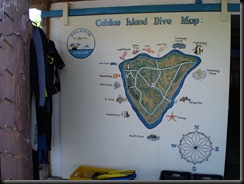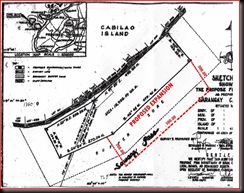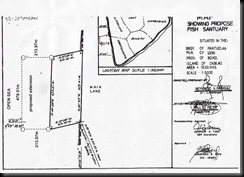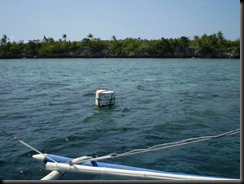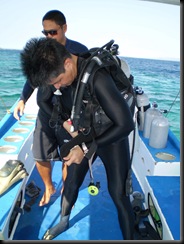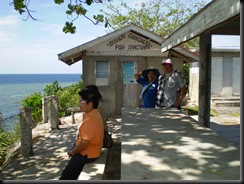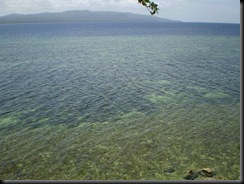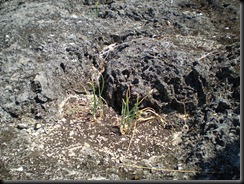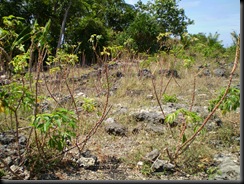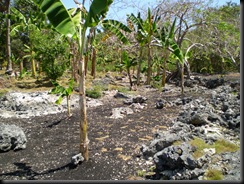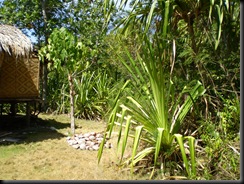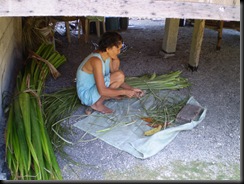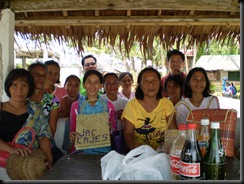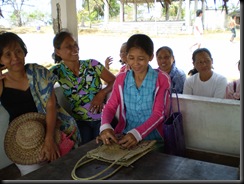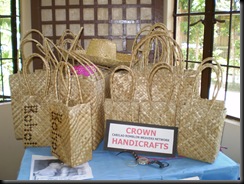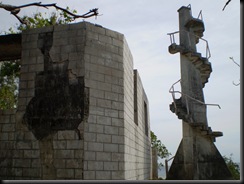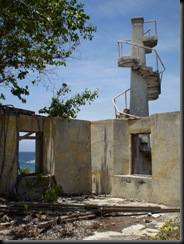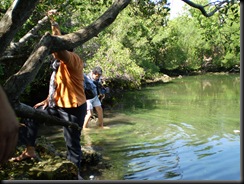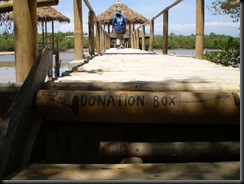 Sitio Lubo is at a cusp. Economic activity is on the upswing, but infrastructure support is not keeping up. Farms are yielding sacks and sacks of corn and peanuts, but the far upland community is not being served by the power grid running through the Municipality of Lake
Sitio Lubo is at a cusp. Economic activity is on the upswing, but infrastructure support is not keeping up. Farms are yielding sacks and sacks of corn and peanuts, but the far upland community is not being served by the power grid running through the Municipality of Lake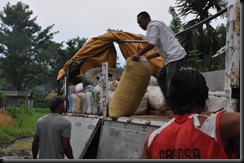 Sebu, water is tapped from the many waterfalls through makeshift flexible hoses, and the roads are so bad that mud is 3 to 4 feet deep in many sections. On one hand, coal mining companies have offered to fix the roads, provide electricity and even scholarship programs,
Sebu, water is tapped from the many waterfalls through makeshift flexible hoses, and the roads are so bad that mud is 3 to 4 feet deep in many sections. On one hand, coal mining companies have offered to fix the roads, provide electricity and even scholarship programs, 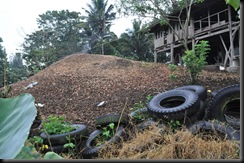 in exchange for rights to extract coal from the area. On the other, Seacology and its partners, Yamog, MISEREOR, and AMORE have offered to provide renewable energy through micro-hydro power in exchange for the community’s commitment to protect their watershed. The community chose renewable energy.
in exchange for rights to extract coal from the area. On the other, Seacology and its partners, Yamog, MISEREOR, and AMORE have offered to provide renewable energy through micro-hydro power in exchange for the community’s commitment to protect their watershed. The community chose renewable energy.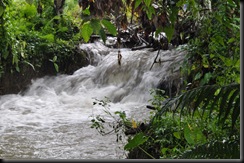
Barangay Ned is the biggest barangay in the Municipality of Lake Sebu. With a total area of 21,246.27 hectares, it is likely also the biggest barangay in Mindanao, if not the whole country, in 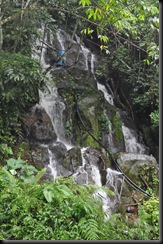 terms of land area. Sitio Lubo, one of some 30 sitios in Barangay Ned, has a total area of 7,345 hectares, 2,500 hectares of which is part of the Kabulnan Watershed Forest Reserve. The climate is cool, a consequence of the 900 meter average elevation.
terms of land area. Sitio Lubo, one of some 30 sitios in Barangay Ned, has a total area of 7,345 hectares, 2,500 hectares of which is part of the Kabulnan Watershed Forest Reserve. The climate is cool, a consequence of the 900 meter average elevation.
We arrived in the village on September 10, 2010 at about 3:30 pm after an hour and a half ride on a pick-up truck, which took us from the General Santos City airport to the Municipality of Sto. Nino, and another 4-hour ride on a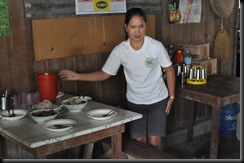 motorcycle up the southern Tiruray Highlands after a quick early lunch. We were supposed to have met with the community leaders at about 5:00 pm, but the meeting was preempted by an
motorcycle up the southern Tiruray Highlands after a quick early lunch. We were supposed to have met with the community leaders at about 5:00 pm, but the meeting was preempted by an 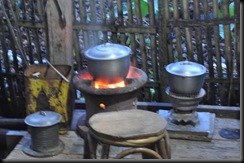 unscheduled PTA assembly at the Lubo High School on Responsible Parenthood, precipitated by an incidence of teenage pregnancy. We had to reschedule the following day. Just as well. Riding
unscheduled PTA assembly at the Lubo High School on Responsible Parenthood, precipitated by an incidence of teenage pregnancy. We had to reschedule the following day. Just as well. Riding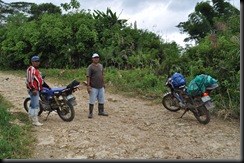 tandem on a motorcycle as it sloshed for hours uphill through thick mud and loose rock took a lot more from me than I expected. I was tired.
tandem on a motorcycle as it sloshed for hours uphill through thick mud and loose rock took a lot more from me than I expected. I was tired.
Sitio Lubo residents generally rely on kerosene 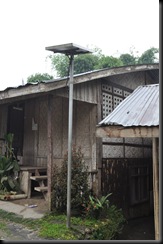 for lighting and fuel wood for cooking. A few households lease solar power home systems from a cooperative for P220 a month – pretty steep considering one unit can only power 3-4 lightbulbs per night. Still fewer households have small 3-kilowatt gas-fed generators, which provide enough power for several lights, a television set, and a satellite dish antenna. Gil Bopas, who graciously fed us and put us up for the night, is one of the latter.
for lighting and fuel wood for cooking. A few households lease solar power home systems from a cooperative for P220 a month – pretty steep considering one unit can only power 3-4 lightbulbs per night. Still fewer households have small 3-kilowatt gas-fed generators, which provide enough power for several lights, a television set, and a satellite dish antenna. Gil Bopas, who graciously fed us and put us up for the night, is one of the latter.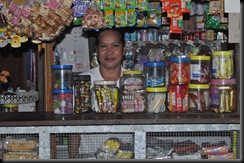
Owners of a corn farm, corn mill and a sari-sari store, Gil Bopas and his wife Josephine, who teaches at the Lubo High School, are one of the more affluent members of the community. But they too are looking 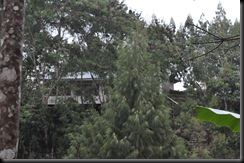 forward to the promise of clean energy from the micro-hydro because it would mean 24-hour electricity for their appliances without having to buy fuel all the way from municipal centers like Sto. Nino. There are simply no gas stations in these mountains.
forward to the promise of clean energy from the micro-hydro because it would mean 24-hour electricity for their appliances without having to buy fuel all the way from municipal centers like Sto. Nino. There are simply no gas stations in these mountains.
Lubo High School itself owes much of its facilities from the local PTA. Its 12 computers were provided by the PTA, and the generator that powers them was also solicited from the PTA. Internet connection and fuel for the 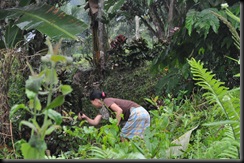 generator? Monthly PTA dues. In a sense, the community seems to have been left to fend for themselves, but it also seems that they are doing a pretty decent job at coping as well.
generator? Monthly PTA dues. In a sense, the community seems to have been left to fend for themselves, but it also seems that they are doing a pretty decent job at coping as well.
Double-differential 4x4 10-wheeler trucks are the economic lifeblood 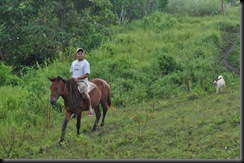 of the village. These and the nimble motorcycles are the only vehicles that can traverse the miry roads. Maybe a monster truck will do too, except I didn’t see any. Soap, sugar, fossil-based fuels, and other necessities are cargo going up. Sacks of corn, peanuts, and
of the village. These and the nimble motorcycles are the only vehicles that can traverse the miry roads. Maybe a monster truck will do too, except I didn’t see any. Soap, sugar, fossil-based fuels, and other necessities are cargo going up. Sacks of corn, peanuts, and 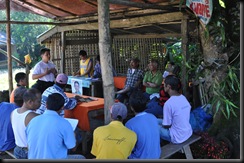 fertilizer from huge compost heaps are cargo going down. From the T’boli sub-community, coffee and fruits like marang and durian occasionally make it to the lowland markets as well.
fertilizer from huge compost heaps are cargo going down. From the T’boli sub-community, coffee and fruits like marang and durian occasionally make it to the lowland markets as well.
Meeting over brews of local coffee the following morning, the community leaders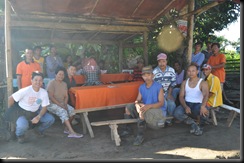 reaffirmed their commitment to protect their watershed as they expressed their gratitude to Seacology and partners for the micro-hydro project. A cooperative will be set up to manage and maintain the micro-hydro, meters will be installed in houses, and
reaffirmed their commitment to protect their watershed as they expressed their gratitude to Seacology and partners for the micro-hydro project. A cooperative will be set up to manage and maintain the micro-hydro, meters will be installed in houses, and 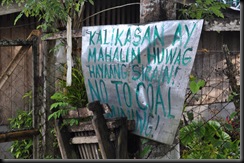 revenues based on consumption will be collected.
revenues based on consumption will be collected.
Also discussed were the strategies the coal mining companies were employing to gain access to mining rights, as well as the steps the community is taking, with 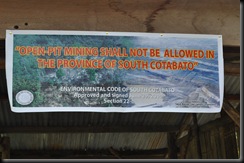 the help of local Christian churches, to neutralize these. Anti-mining posters around town, some improvised, some church-provided, give a clue to their sentiments.
the help of local Christian churches, to neutralize these. Anti-mining posters around town, some improvised, some church-provided, give a clue to their sentiments.
The micro-hydro power station will be constructed nearby at the point where the Kalulo and Kabusong creeks meet, some 300 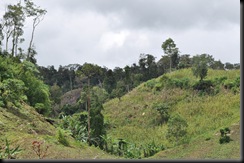 meters below the main village. But this is too far for electricity to reach the T’boli sub-community some 6 kilometers further up the mountains. For a win-win solution, it was agreed that the cooperative will set aside a fixed amount from revenues for
meters below the main village. But this is too far for electricity to reach the T’boli sub-community some 6 kilometers further up the mountains. For a win-win solution, it was agreed that the cooperative will set aside a fixed amount from revenues for 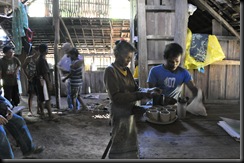 the benefit of the T’bolis. This may then be used to construct and maintain a ram pump or 3-5 kilowatt pico hydro for the T’boli, depending on their preference. The T’boli will also have representation on the cooperative.
the benefit of the T’bolis. This may then be used to construct and maintain a ram pump or 3-5 kilowatt pico hydro for the T’boli, depending on their preference. The T’boli will also have representation on the cooperative.
After a hearty breakfast 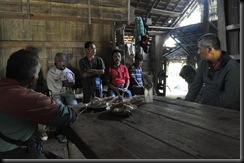 at the Bopas’ home, we went off on motorcycles again for the 1-hour trip to the T’boli sub-community. Slopes devoted to corn gave way to coffee plantations leased by a big company, before reaching the edge of the forest where we were welcomed into
at the Bopas’ home, we went off on motorcycles again for the 1-hour trip to the T’boli sub-community. Slopes devoted to corn gave way to coffee plantations leased by a big company, before reaching the edge of the forest where we were welcomed into the main house of the T’boli.
the main house of the T’boli.
Datu Victor Danyang is the leader of the T’boli in Sitio Lubo, and is also the Chair of the T'boli Manobo Sdaf Claim Organization or TAMASCO. He spoke of the T’boli’s commitment to the protection of their 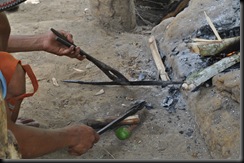 watershed as something second-nature to them, that they shouldn’t even be asked about it in the first place. He spoke against the coal mining companies and exhorted those who were listening to unite in the struggle against any mining in their ancestral domain.
watershed as something second-nature to them, that they shouldn’t even be asked about it in the first place. He spoke against the coal mining companies and exhorted those who were listening to unite in the struggle against any mining in their ancestral domain.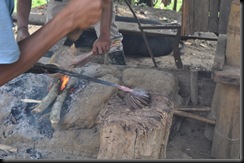 He spoke with such intensity and conviction, with a no-nonsense grin blood red from betel nut chewing, that it was impossible not to be inspired by his words. And maybe a little frightened. I thought anyone would be an idiot to contradict him then and there.
He spoke with such intensity and conviction, with a no-nonsense grin blood red from betel nut chewing, that it was impossible not to be inspired by his words. And maybe a little frightened. I thought anyone would be an idiot to contradict him then and there.
When my turn came to speak, I thanked them for their firm commitment to protect their watershed, and that it is their commitment precisely that is making the funds for the micro-hydro 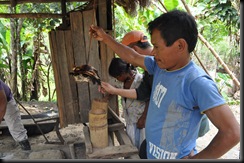 possible. Fear has a way of making diplomats of us all. kidding. But the meeting left no doubt in my mind that the T’boli will hold up to their part of the bargain.
possible. Fear has a way of making diplomats of us all. kidding. But the meeting left no doubt in my mind that the T’boli will hold up to their part of the bargain.
T’boli coffee has a smoky flavor and went very well with the boiled taro root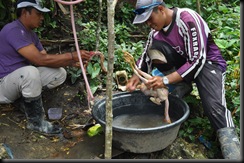 served during the meeting. As talk turned to the needs of the T’boli, TAMASCO leader Abelardo Wali lamented the lack of a water distribution system in the sub-community. It turns out that a ram pump was installed in the area before, but it was not well constructed. It was generally agreed that the first funds from the micro-hydro revenue
served during the meeting. As talk turned to the needs of the T’boli, TAMASCO leader Abelardo Wali lamented the lack of a water distribution system in the sub-community. It turns out that a ram pump was installed in the area before, but it was not well constructed. It was generally agreed that the first funds from the micro-hydro revenue 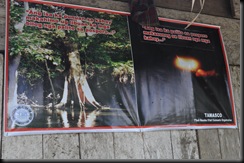 would be used to rehabilitate the ram pump.
would be used to rehabilitate the ram pump.
Lubo is a T’boli word meaning disappearing water. Apparently, Sitio Lubo sits on top of a network of limestone caves where water on higher elevations can suddenly divert to without warning. The non-functioning ram pump was designed with a particular water source in mind, when the water abruptly flowed underground as construction was finished.
warning. The non-functioning ram pump was designed with a particular water source in mind, when the water abruptly flowed underground as construction was finished.
Around the main house the T’bolis gathered wildlings from which they would start the nursery with. Sustainable agriculture and forestry will occur just 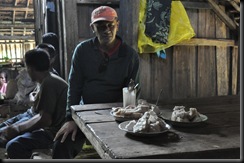 beyond the forest. The fruit trees they intend to plant are durian, mangosteen, rambutan and marang – highly marketable fruits that can be found to some degree within the watershed.
beyond the forest. The fruit trees they intend to plant are durian, mangosteen, rambutan and marang – highly marketable fruits that can be found to some degree within the watershed.
The planting of fruit trees brings with it the promise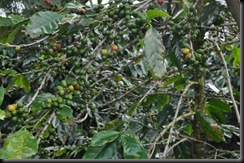 of a continuation of the T’boli’s gathering ways. It will also serve as hunting ground for deer and wild boar that stray outside the forest.
of a continuation of the T’boli’s gathering ways. It will also serve as hunting ground for deer and wild boar that stray outside the forest.
Later a T’boli metalworker showed me how they make their tools and trinkets using 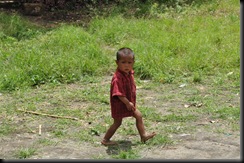 bamboo blowers with feather-lined pistons. It was also where the communal lunch was singed before being stewed.
bamboo blowers with feather-lined pistons. It was also where the communal lunch was singed before being stewed.
We left just after lunch for the long way back to General Santos City where I will catch my flight back to Manila the following day. This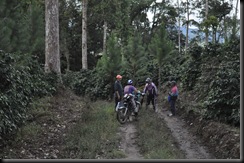 Thursday, September 16, there will be a groundbreaking ceremony at the micro-hydro project site to mark the start of construction – really the start of an endless slew of possibilities for Sitio Lubo.
Thursday, September 16, there will be a groundbreaking ceremony at the micro-hydro project site to mark the start of construction – really the start of an endless slew of possibilities for Sitio Lubo.

![clip_image002[5] clip_image002[5]](http://lh6.ggpht.com/_ibCqaP4tBDM/S69mfxeDk-I/AAAAAAAAAOw/-RbsOUVItv8/clip_image002%5B5%5D_thumb%5B1%5D.jpg?imgmax=800)
